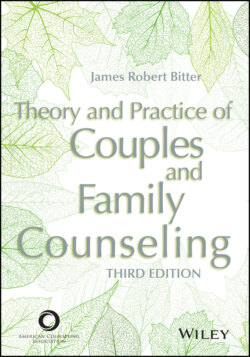Читать книгу Theory and Practice of Couples and Family Counseling - James Robert Bitter - Страница 59
The History of Couples and Family Counseling IV: The Evidence-Based Practices of Cognitive Behavioral Family Therapy, Parenting, and Couples Counseling Ivan Pavlov, John Watson, and B. F. Skinner: The Development of Behavioral Approaches
ОглавлениеIvan Pavlov was a Russian physiologist studying the digestive processes of dogs in the late 1800s when he noticed that some dogs would start to salivate before food ever hit their mouths. His study of dogs led him to the discovery of conditioned reflexes, for which he won the Nobel Prize in 1904.
A conditioned reflex is a learned response, and thus Pavlov’s description of learning quickly became the foundation for behavioral psychology. In this model, now called classical conditioning, an unconditioned stimulus invokes an unconditioned response. When the subject is presented with a controlled or conditioned stimulus a split second before the unconditioned stimulus, these two stimuli are paired. Eventually the conditioned stimulus by itself will produce the formerly unconditioned response, only now it is a learned or conditioned response. In Pavlov’s experiments, meat powder (unconditioned stimulus) was placed on the tongue of a dog, causing salivation (unconditioned response). Just before the meat powder was placed on the tongue of the dog, a tone (conditioned stimulus) was played for the dog to hear. After a while, the tone itself produced salivation in the dog (conditioned response).
In the United States in 1920, John Watson, considered by most to be the father of behaviorism, conducted (with his assistant Rosalie Rayner) an experiment on Little Albert. Baby Albert’s mother was induced to volunteer her baby through an offer of money because she made very little selling her breast milk. (I know, too much information.) Little Albert was not quite 9 months old when Watson tested him to see which animals or objects he might delight in touching: A white rat was chosen. So Albert was given the white rat just before a large metal bar was clanged just behind his head. The clanging (unconditioned stimulus) produced fear (unconditioned response) in Albert, and in a short time the white rat (conditioned stimulus) alone produced that same fear (conditioned response). Watson was overjoyed. He had created a phobia. He also discovered that the phobia had generalized to other furry animals (i.e., a black rabbit). The boy left the hospital before the phobia could be reversed.
In 1924, Mary Cover Jones did reverse an induced phobia with a little boy named Peter. She used a method of successive approximations of the phobia paired with responses that were incompatible with fear. She called her method desensitization, and this became the basis for the work of Joseph Wolpe (1990), who more fully developed the approach, now called systematic desensitization.
B. F. Skinner became interested in the work of Pavlov and Watson when he went to graduate school at Harvard University. After getting a degree in psychology, he stayed at Harvard as a research assistant. He was assigned to both the physiology and psychology departments, and each thought the other was supervising him. In fact, he was turned loose in a Harvard laboratory to do as he pleased. And what he did was invent a mechanical device called a cumulative recorder that measured every movement a rat made in a box. What he observed turned Pavlov’s classical model completely on its head. Skinner discovered that the rat learned to operate in the box based not on conditioned reflexes but rather on what happened after the rat acted, that is, on the consequences of its action. Skinner called these consequences reinforcements, and his model became known as operant conditioning.
Albert Bandura (1977) took Skinner’s operant conditioning model and applied it to social contexts, creating what is now called social learning theory. This model suggests that learning, including ways of interacting, can be learned or shaped by watching the cues from others (modeling) and having efforts at approximating the modeled behavior reinforced. Robert Liberman is one of many behaviorists who have applied social learning theory to work with couples and families (Nichols & Davis, 2017).
At the University of Oregon, Gerald Patterson and Marion Forgatch (1987; Forgatch & Patterson, 2005) also applied social learning theory in training parents to lead functional families. Their training approaches would become the basis for parenting programs and manuals that address some of the most difficult behavioral problems in adolescents. Similarly, Richard Stuart (1980) applied contingency contracting, communication training, and mutual reinforcement to couples, but these methods are also easily applied to relationships with children.
